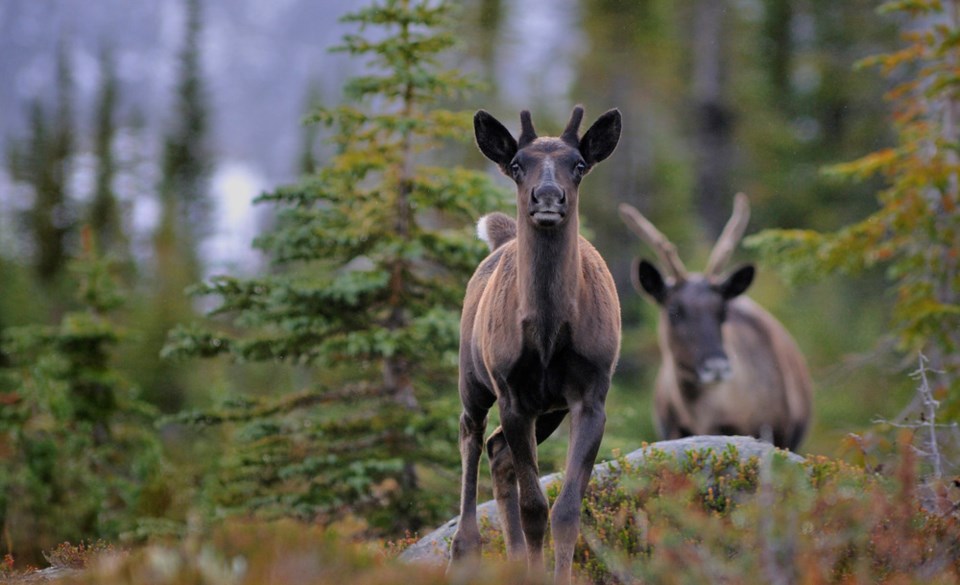
ItÔÇÖs no secret that for years JasperÔÇÖs caribou populations have been struggling.
Last October, when Parks staff did their annual count of the four herds that call the park home, they found that all of their numbers had been reduced, some quite significantly.
Changes in predator/prey dynamics, increased human disturbance, habitat loss, predator access and the small population effect have all led to the continued decline in the size of the herds.
With two of the herdsÔÇöthe Maligne and the BrazeauÔÇönow sitting at less than 10 animals, Supt. Greg Fenton said that Parks may be only months away from beginning a captive breeding program to help stabilize their numbers.
With the help of the Calgary Zoo, the program would take caribou from healthy populations in British Columbia and bring them to a special captive breeding facility away from the main zoo grounds.
Over the course of about four years, young caribou born at the facility would be added to the struggling herds, at a rate of about 15 animals per year. Fenton explained that the goal would be to bring the size of the herds up to 45 caribou.
ÔÇťBased on the biology of caribou populations, the likelihood of the population being in a position where it can grow on its own is better if it has a population of 45,ÔÇŁ he said. Once the herd can grow on its own, its ideal size is approximately 75 animals.
The program would last for approximately 10 years, over which Fenton guessed the Maligne and Tonquin herds would be the first to be bolstered. If those reintroductions were to be successful, struggling populations outside of the national parks would also get help.
Fenton said that Parks has been working with the Calgary Zoo to hammer out the details of the program. However, whether or not it goes forward hinges on Parks securing funding.
ÔÇťThereÔÇÖs a whole number of pieces we have put together in draft format, now weÔÇÖre just waiting to finalize and sort out the funding pieces,ÔÇŁ Fenton explained.
Fenton said if funding is secured, it will almost certainly come from the corporate sector. While he stressed that nothing has been finalized yet, he mentioned ÔÇťoil and gasÔÇŁ as industries that have expressed interest in contributing to the program.
ÔÇťItÔÇÖs getting closer. I am hopeful we will have a sense of whether we will have funding in place within the next six months,ÔÇŁ he said.
If the program does move forward, Fenton explained it will be the end result of a process that began in 2001, when ÔÇťwe were developing our own caribou conservation plan for mountain national parks.ÔÇŁ
After a major public engagement campaign, Parks signed a memorandum of understanding with the Calgary Zoo and the provinces of Alberta and British Columbia, which Fenton called ÔÇťan agreement in principle to explore a captive breeding program that would help us in the implementation of our conservation strategy.ÔÇŁ
Environment Canada released its own formal recovery plan for southern woodland caribou earlier this year. The plan has been posted for public review on the Species At Risk Public Registry and Fenton said itÔÇÖs open to review and comment until March 17.
Parks has been implementing its conservation strategy for several years now. Backcountry enthusiasts will be familiar with some of the measures included in that strategy, such as closing certain winter recreation areas during important survival months for the caribou.
Despite those measures, Fenton said, the herds continue to decline in size, making captive breeding even more important if Jasper hopes to save its caribou populations.
 Trevor Nichols
[email protected]

